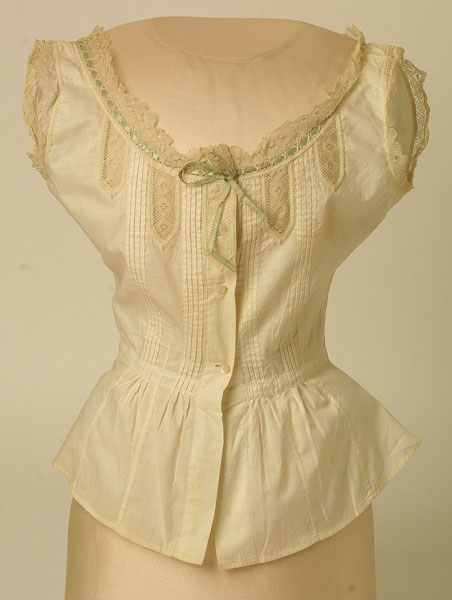camisole
Summary
white cotton, fastening in the centre at the front with three buttons and buttonholes (one concealed). A low, round neck, with a threaded pale blue satin ribbon that ties in a bow at the front. Neck and armholes are edged with lace. Eight tucks on both the front and back are fastened down to waist. Front has lace inserted inbetween tucks from neck. Can be tightened at waist with a drawstring.
Display Label
According to Drs W. and P. Cunnington in their seminal book on underwear, first published in 1951, the camisole or "under vest" first came into common use in the 1840s. It was originally made of white cotton longcloth, shaped to the waist by gores, and worn over the stays as a cover; the shift or chemise was still worn next to the skin below the stays. After the 1870s it might also be called a "petticoat bodice", as explained contemporarily in 1906: "Petticoat bodices or as we now call them "corset covers" are made of thin silk en princesse with no sleeves. Underclothing becomes thinner and thinner". Typical of Edwardian women's underwear, this camisole is highly decorated, trimmed with valenciennes lace and broderie anglais openwork, and threaded with decorative blue silk ribbon. The name "Gwennie" is embroidered in the camisole, but unfortunately we know nothing more about the original wearer. We also have Gwennie's chemise in the collections, illustrated in this theme on underwear.
Object Name
camisole
Date Created
1892
Dimensions
Length: 50.8cm
Waist: 62.2cm
accession number
1947.1155
Collection Group
Medium
Legal
© Manchester Art Gallery


